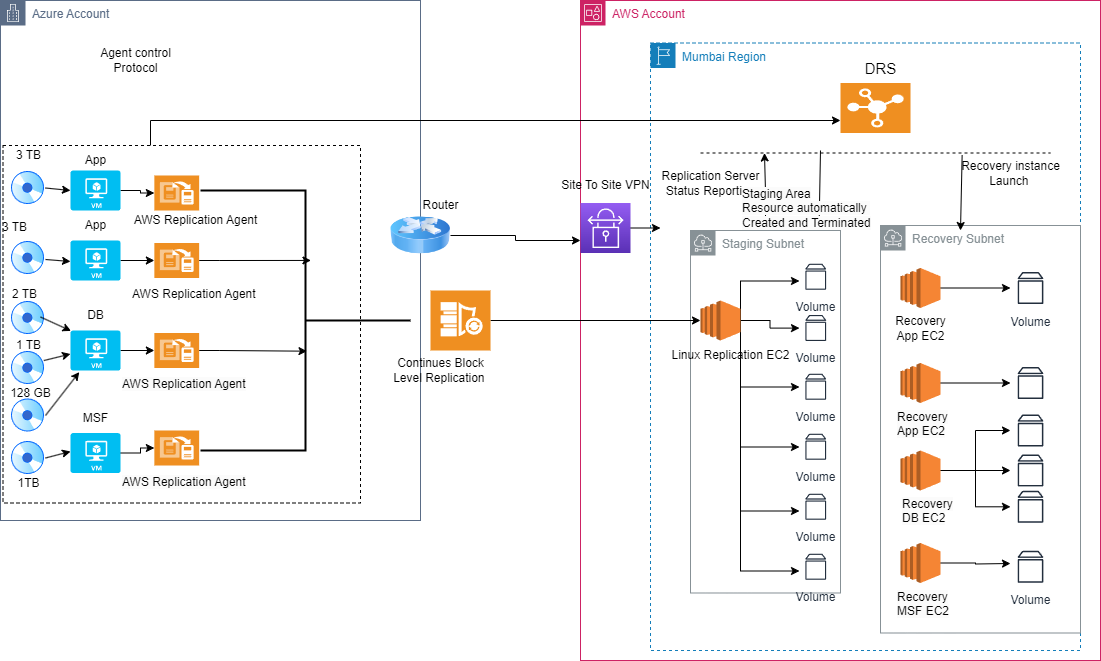enreap's collaboration with Sterling Accuris for AWS backup & DR success
Use Case - Backup & Disaster Recovery
About customer
Sterling Accuris Diagnostics is committed to providing reliable and dependable services to a
wide range of clients, including hospitals, corporate entities, B2B partners, B2C customers, and
individuals alike.
Sterling Accuris Diagnostics recognizes the importance of precision and reliability in
healthcare diagnostics, as accurate diagnostic results play a crucial role in patient care, treatment
decisions, and overall healthcare outcomes. With this understanding, the company has invested in
state-of-the-art technology, cutting-edge equipment, and a team of highly skilled professionals to
ensure the highest level of accuracy and reliability in its diagnostic services.

Summary
Sterling Accuris encountered a significant operational challenge when their LIMS application and critical data hosted on Azure experienced downtime, impacting customer-facing tasks. Seeking a solution for business continuity, they turned to Enreap for assistance. Their primary concern was safeguarding their workload against potential threats like natural disasters, cyber-attacks, equipment failures, and human error. Downtime with their primary infrastructure resulted in lost revenue, damage to their reputation, and regulatory non-compliance, necessitating a robust DR solution. To ensure uninterrupted operations, Sterling Accuris demanded a comprehensive DR solution including regular backups, offsite storage, data replication, and failover capabilities. Additionally, they requested monthly drills to test and validate the system's effectiveness and readiness to respond to potential disasters. Consequently, Sterling Accuris planned to transition its infrastructure from Azure to the AWS cloud as part of its disaster recovery strategy.
Challenges
• Significant operational disruptions due to downtime experienced by their LIMS
application and critical data on Azure, impacting customer-facing tasks.
• Loss of revenue, damage to reputation, and regulatory non-compliance resulting from
the downtime, emphasizing the need for a robust DR solution.
• Concerns regarding safeguarding their workload against potential threats such as natural
disasters, cyber-attacks, equipment failures, and human error.
•The complexity involved in transitioning infrastructure from Azure to AWS while
ensuring seamless continuity of operations.
• Difficulty in conducting monthly drills to test and validate the effectiveness of the DR
system, requiring careful planning and coordination to address.
• The customer assesses the existing Azure infrastructure to determine the requirements for setting up DR on AWS.
• The project asked to establish secure network connectivity between Azure and AWS
environments to facilitate data replication and failover.
• Customers want to test and validate the failover and recovery processes to ensure they meet the
desired 15-minute RTO and 30-minute RPO objectives.
• Customers want to Monitor the DR setup on an ongoing basis and ensure its reliability,
performance, and compliance with SLAs (Service Level Agreements).
Solution
The solution included conducting a comprehensive assessment to identify critical workloads and
assess compatibility with AWS. AWS Discovery Services were utilized for gauging migration
readiness. Secure data replication was achieved using AWS DRS Service, Secure connectivity
with AWS was established via Site-to-Site VPN, along with setting up private connections.
Failover procedures were automated using AWS launch templates for enhanced efficiency, with
regular failover tests conducted using AWS EDR to validate effectiveness. System health was
monitored using AWS CloudWatch Alarms and Health Checks, ensuring proactive response.
Compliance with AWS Security best practices. The customer aimed to leverage AWS services and Elastic Disaster Recovery, to minimize downtime and data loss, ensuring swift and dependable recovery.
• Conducted comprehensive assessment to identify critical workloads and compatibility with AWS.
• We have used AWS Elastic Disaster Recovery.
• Established secure connectivity with AWS site-to-site VPN
• Automated failover with AWS launch templates.
• Set up private connections with AWS site to site VPN.
• Automated failover with AWS CloudFormation.
• Conducted regular failover tests using AWS EDR.
• Used AWS CloudWatch Alarms and Health Checks for monitoring.
• The customer aims to leverage AWS services and Elastic Disaster Recovery (AWS DRS) to
minimize downtime and data loss while ensuring fast and reliable recovery.
Architecture diagram

